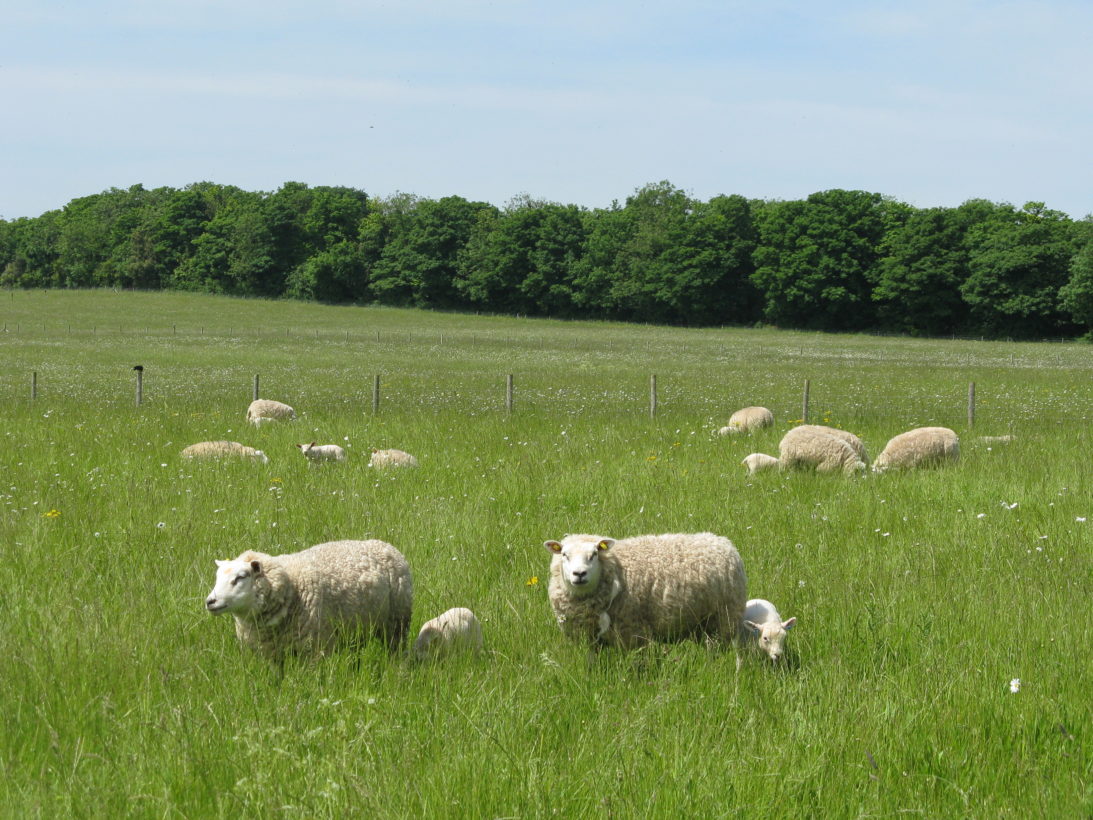Farming on Magog Down
When the Trust was formed in 1989 it was agreed that a substantial proportion of the land should be maintained in agriculture. There were three reasons for this decision: to provide revenue, to benefit the development of the chalkland flora and for the interest of visitors.
In total the farmed area is about 44 ha (108 acres) with 23 ha (57 acres) in arable crops and 21 ha (51 acres) in sheep paddocks. From the outset the arable crops have been managed by Adam Rayner of David Rayner Farms at Swaffham Bulbeck. All the machinery for cultivation, sowing, spraying and harvesting has to travel from the home farm and it is only worthwhile because Adam also manages most of the land adjacent to Magog Down. The crops grown in rotation are winter-sown wheat and barley, sugar beet or oilseed rape and occasionally peas or beans.
The Trust has no income from the sheep grazing but, over the last 3 years, the sale of crops grown on the arable area has averaged £33,000, generating a net surplus of £6,000 per annum. In addition, like all UK farmers, the Trust receives an annual acreage payment from Defra which has averaged £13,500 over the same period. Farming, therefore, presently makes a net contribution of approximately £20,000 pa to the Trust’s finances but this will decline in future years. From 2024 the acreage payment will be progressively reduced, reaching zero in 2027.
Mark Deller, who farms in Whittlesford and Thriplow, grazes his sheep on the grass paddocks and with his son Charlie cuts and bales North Down. Each Spring, ewes with their new-born lambs graze on the Down soon after the grass starts growing in the Spring. Both the sheep grazing and the removal of hay are important in reducing the soil fertility which in turn assists the chalkland flowers to flourish on the Down.

